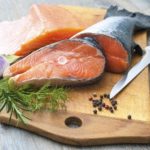How Dangerous Is Mold On Food?
I throw out any food that has become moldy, but a friend calls that wasteful and says that it is OK to just cut away the moldy part and eat the rest. Which of us is right?
Andrew Weil, M.D. | July 7, 2014

Molds are microscopic fungi that live on plant or animal matter. We don’t know how many species of fungi exist, but according to the U.S. Department of Agriculture (USDA), the total might range from tens of thousands to upwards of 300,000. Most are threadlike organisms that produce spores that can be transported by air, water, or insects.
Unfortunately, with mold, what you see is not always all you get. The visible mold that can develop on food may have invisible thread-like branches and roots that reach deep under the surface. Mold on food is not only unsightly – it can cause allergic reactions and respiratory problems, and given the right conditions, a few molds can produce poisonous “mycotoxins” capable of making you sick. If you see heavy mold growth on the surface of food, you can assume that its roots run deep. Sometimes the same conditions that favor mold allow unseen bacteria to grow along with the fungi.
Most molds prefer warmer temperatures, but all of us have seen that they also can grow in the refrigerator. You’re most likely to see them in refrigerated jams and jelly, bread and cheese, and on cured, salty meats such as ham, bacon, salami, and bologna.
You can safely cut the mold away from some foods and eat the rest, but this applies largely to hard food including hard cheese. The USDA advises cutting off at least one inch around and below the mold. Be sure to keep the knife out of the mold so it will not cross-contaminate other parts of the cheese. After trimming off the mold, use a fresh wrap.
If you see mold on hard vegetables such as cabbage, bell peppers and carrots, cut off at least one inch around and below the affected area. (Here, too, avoid contaminating the knife.) But if you see mold on soft fruits and vegetables such as cucumbers, peaches and tomatoes, throw them away; the mold will have penetrated far below the surface.
If you encounter mold that is not part of the manufacturing process (as with Brie and Camembert), throw out the cheese. If surface mold is on hard cheeses made with mold such as Gorgonzola and Stilton, cut off at least one inch around and below the mold spot as you would with other hard cheeses.
In addition, the USDA recommends discarding other food with visible mold including luncheon meats, bacon, or hot dogs, leftover cooked meat and poultry, leftover cooked grains and pasta, cooked casseroles, yogurt and sour cream, jams and jellies, bread and baked goods, peanut butter, legumes and nuts.
You can control mold by keeping your refrigerator, dishcloths and other cleaning utensils clean. A musty smell means that dishcloths, towels, sponges and mops are harboring mold. Throw away any you can’t get clean. The USDA also recommends cleaning the inside of your refrigerator every few months with one tablespoon of baking soda dissolved in a quart of water. Rinse with clear water and dry. Scrub visible mold (usually black) on rubber casings using three teaspoons of bleach in a quart of water.
Andrew Weil, M.D.
Sources:
USDA Food Safety and Inspection Service. “Molds on Food: Are They Dangerous?” http://www.fsis.usda.gov/wps/portal/fsis/topics/food-safety-education/get-answers/food-safety-fact-sheets/safe-food-handling/molds-on-food-are-they-dangerous_/, accessed May 28, 2014.










